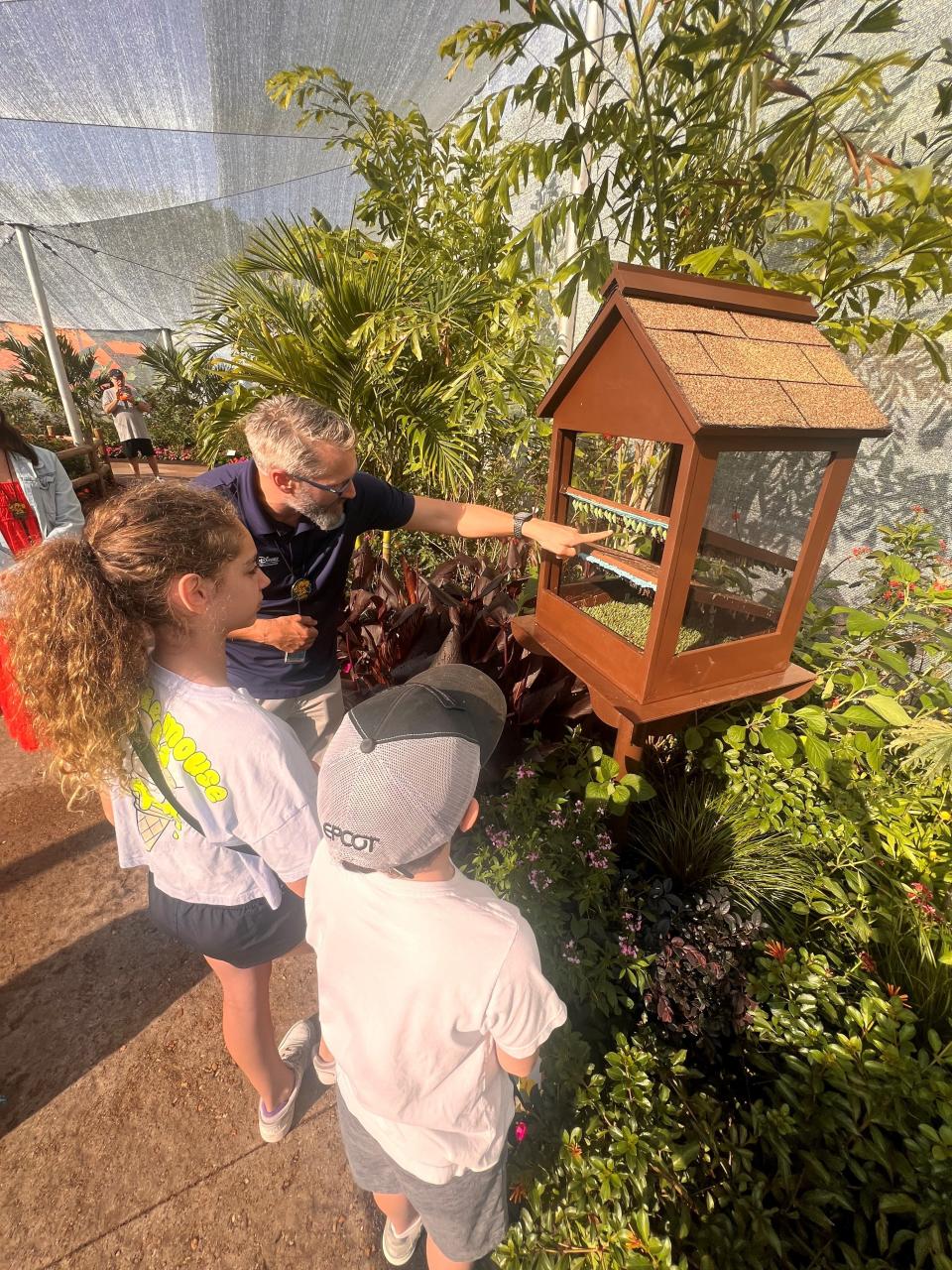Disney World day offers this mom and kids a bird's-eye view of bees, bats and life lessons
- Oops!Something went wrong.Please try again later.
As a working mom, the guilt is always there.
Am I spending enough time with my children? Is it OK that I can’t volunteer in their classrooms? Will I have time to teach them life’s lessons?
Like many moms (working or not), my hours are limited, and trying to squeeze it all in is usually impossible. Last month Brevard Public Schools sent an email declaring April 25 as “Bring your Sons and Daughters to Work Day.”
Immediately my three kiddos and I were excited for this opportunity. And then I realized, my job isn’t all that exciting 80% of the time. I needed to showcase the other 20%, when I’m not sitting in my home office typing away and conducting phone interviews.
Walt Disney World is in the conservation business

Enter my friends at Walt Disney World. Occasionally I get to cover some of the cool news related to this worldwide vacation destination so I reached out to the public relations folks there.
They helped set up an interview with Zak Gezon. The director of Disney Conservation, better known as Dr. Zak, let us in on some info many people don’t realize.
While Walt Disney World is known to everyone as the master of storytelling as well as rides and attractions, the mouse house also puts a huge emphasis on conservation. It employs a team dedicaetd to those efforts.
The team includes geologists, botanists, arborists and many more professionals in related fields. While you wouldn’t think these scientists’ jobs have anything to do with roller coasters and Donald Duck, they actually do.
“From the beginning Walt himself was involved in (conservation),” Gezon said. “He said we’re going to do this, and we’re going to do this right. We’re continuing that mission.”
Subtle ways Walt Disney World is saving the bees and helping the butterfly population
At events like the EPCOT International Flower & Garden, going on through the May 27, Disney has a chance to show off its conservation efforts. Gezon walked around the Butterfly Landing, presented by AdventHealth, as the colorful flying insects fluttered around guests' heads.
“Butterflies taste with their feet,” Gezon said. “They like salt, which is why you see them land on sweaty people.”
It’s apparent Disney has a few sweaty people walking around. What’s a little more discreet is the number of butterflies populating the property. There are more than 70 species, which can be found in areas such as near the wild petunia at Disney’s Coronado Springs Resort and native firebush at Disney’s Animal Kingdom.
Steps to increase pollination expands well past the closing of the EPCOT festival. Anytime a new attraction, ride or project is being discussed, Gezon's team is consulted on how it will affect conservation efforts. These "cast members" played a huge role, and continue to, regarding Disney Lighthouse Point at Lookout Cay, the new Bahamian destination that cruise guests will start visiting this summer.
Why does Walt Disney World care about conservation?
Walt Disney was known to have said, “Conservation isn’t just the business of a few people, it’s a matter that concerns all of us.”
The conservation efforts go well beyond butterflies. It includes bees, bats and birds — pollinators that are necessary for a functioning ecosystem. Gezon said that, in turn, leads to more food production and better food.
“We grow food here in EPCOT and that ends up in food we eat and it also feeds animals in Animal Kingdom,” Gezon said. “Increasing is good, but maintaining is where we want to be.”
He and his colleagues are committed to the conservation process and teaching guests the importance of increasing the butterfly population.
Toward the end of my interview with Gezon, one of my children had a question for the scientist.
“Why are these two butterflies stuck together?”
The ecologist and evolutionary biologist, who spent the morning talking with great enthusiasm and eagerly showing my three children why Walt Disney World employs tons of professions they might not have thought about, was suddenly speechless.
“Ummm, this is where my lesson ends. Mom, you want to take that,” Gezon said to me.
Turns out I can squeeze work and life lessons into one day.
Spitzer is a trending teporter. She can be reached at MSpitzer@floridatoday.com. Follow her on Instagram @ByMichelleSpitzer
This article originally appeared on Florida Today: Bees, bats, life lessons: Mom, kids share buzzworthy day at EPCOT

